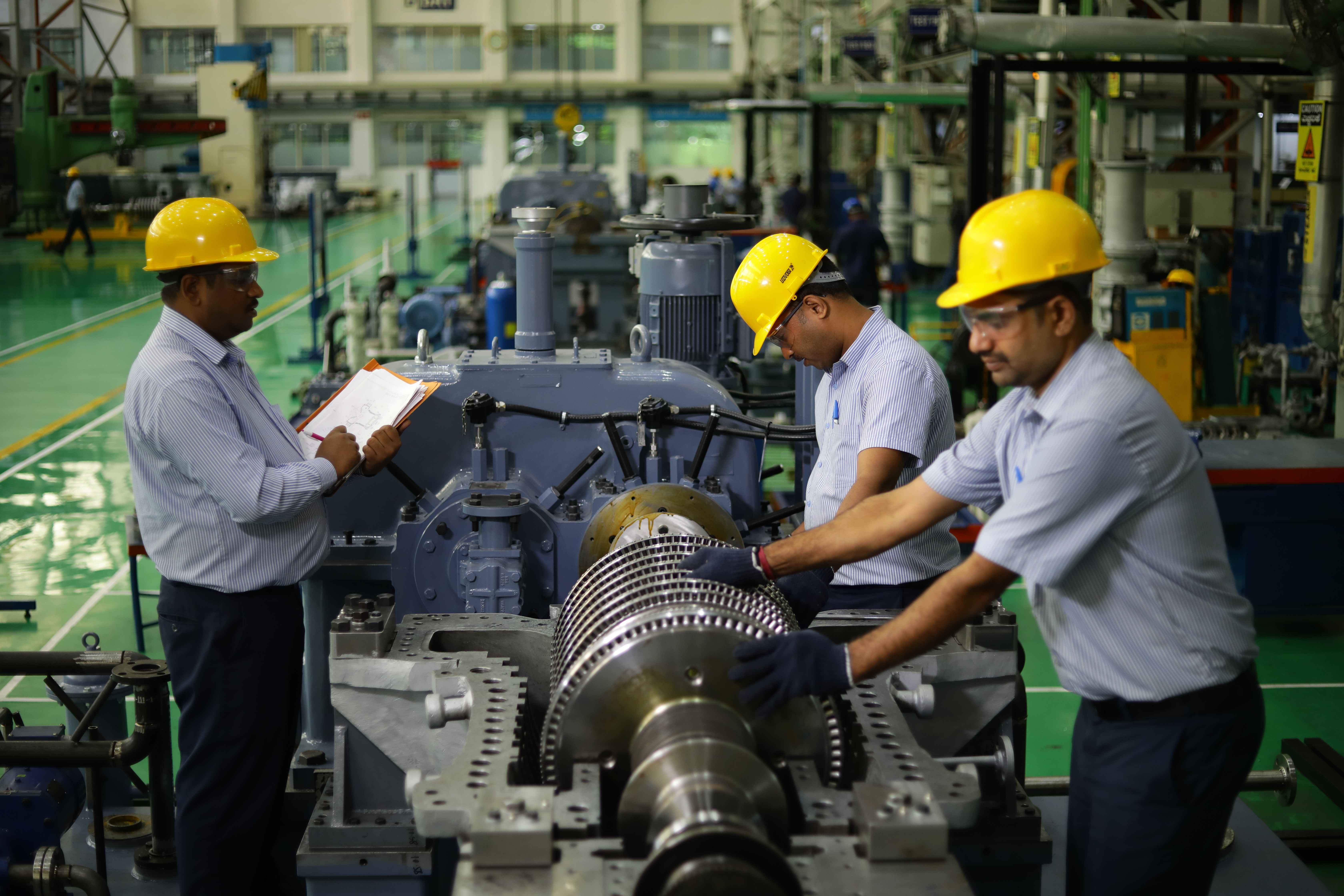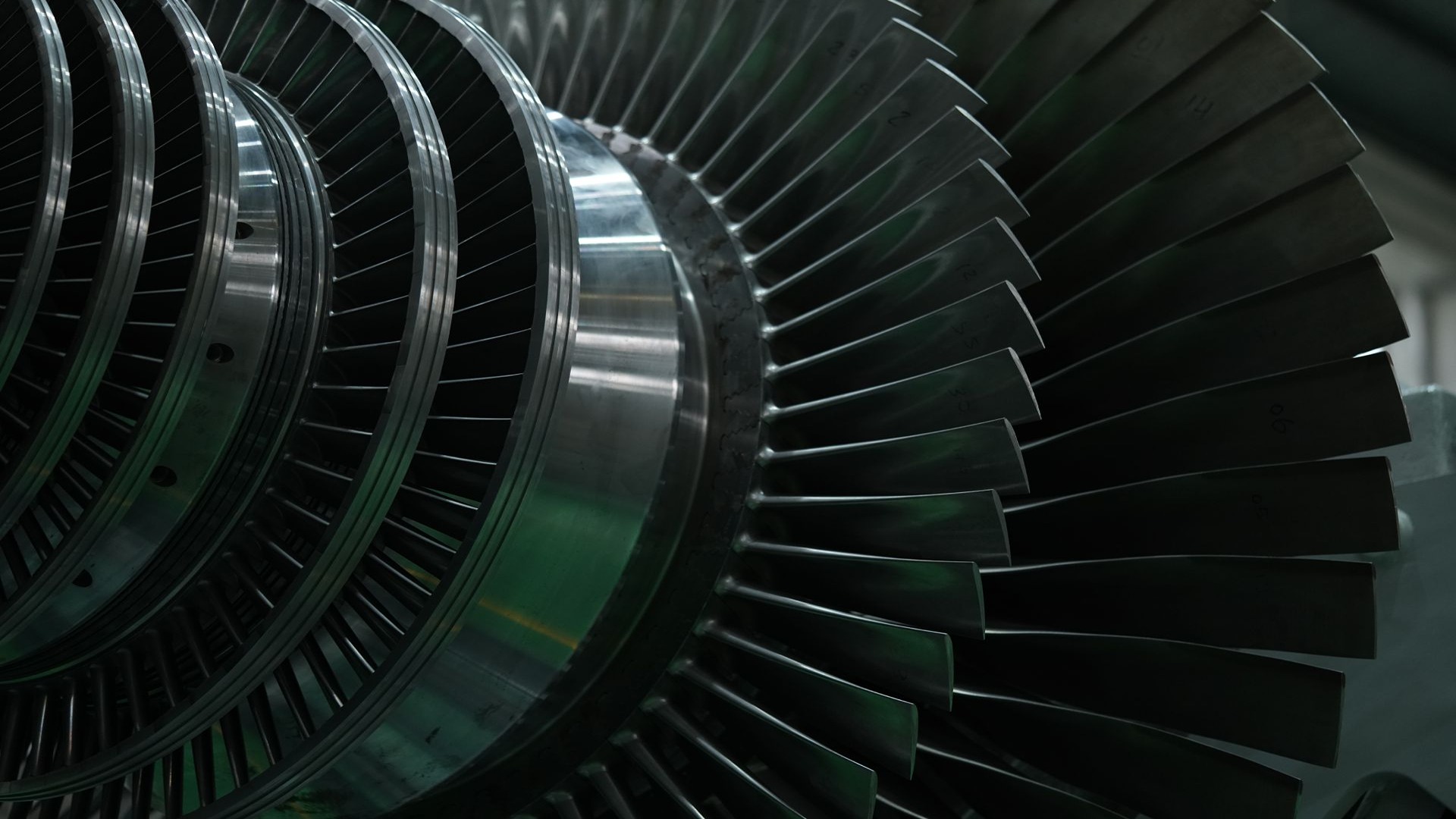
The Benefits of Compounding in Steam Turbines: Efficiency & Design
Steam turbines continue to play a vital role in contemporary power generation and industrial applications with their efficiency, design, and reliability determining the effectiveness of energy production and utilization. One important design concept is the compounding in the steam turbine. Compounding makes turbines practical, safe, and more effective. It controls the speed of moving blades, reduces wear, and ensures better energy conversion.
At Triveni Turbines, we continue to refine this concept in our designs. Our focus on advanced engineering highlights how compounding can transform steam turbine performance. To understand this better, let’s read how compounding works and the benefits it provides.
What is Compounding of a Steam Turbine?
Compounding is a method used to control the high velocity of steam as it expands through a turbine. When steam leaves the nozzle at very high speed, it can cause excessive blade wear or unsafe rotor speeds. Compounding breaks this process into steps. This makes the energy transfer smoother, safer, and more efficient.
Types of Compounding and Their Mechanisms
There are two main methods of compounding, each designed to manage steam flow and energy extraction in a unique way.
- Pressure Compounding of Steam Turbine
In this method, steam expands in stages through several nozzles and blades. Each stage handles part of the pressure drop, reducing the sudden force on blades. This ensures smoother energy absorption, improved reliability, and extended lifespan.
- Velocity Compounding of Steam Turbine
Here, steam expands fully into one nozzle and reaches high velocity. It then passes through multiple blade rows, each slowing it while extracting energy. This maintains rotor speed safety and keeps the turbine compact, making it ideal for smaller setups.
How Compounding Improves Efficiency and Design
Compounding helps improve energy use. By splitting the extraction across multiple stages, less energy is wasted in turbulent flows. Speed control becomes easier because no one stage handles the full load. It also reduces mechanical strain and vibration. These effects lead to better reliability and lower maintenance.
Compounding also enables more compact designs. Instead of using one large nozzle or huge blades, the turbine can use a series of smaller stages. That reduces weight and size while delivering equal or better power output. At Triveni Turbines, we apply these design principles to develop efficient, turnkey steam turbine systems with capacities of up to 100 MWe.
Key Benefits of Compounding in Steam Turbines
Compounding brings together several advantages that directly enhance turbine efficiency, reliability, and overall design.
- Higher thermodynamic efficiency with reduced energy loss
- Better speed control and safer rotor operation
- Lower mechanical stress, hence less vibration
- Compact and lighter turbine builds
- Longer life of blades and internal parts
When compounding is well designed, all these benefits work together. The turbine consumes less steam or fuel for the same output. It operates more reliably over time.
Boost Efficiency with Steam Turbine Compounding
The compounding of steam turbines continues to be a fundamental principle in modern turbine engineering. Choosing between pressure compounding and velocity compounding of a steam turbine depends on the application, scale, and constraints. Well-designed compounding yields higher efficiency, better speed control, more compact systems, and longer life. At Triveni Turbines, we continue to integrate these principles to deliver powerful and dependable turbines to our global clients.
